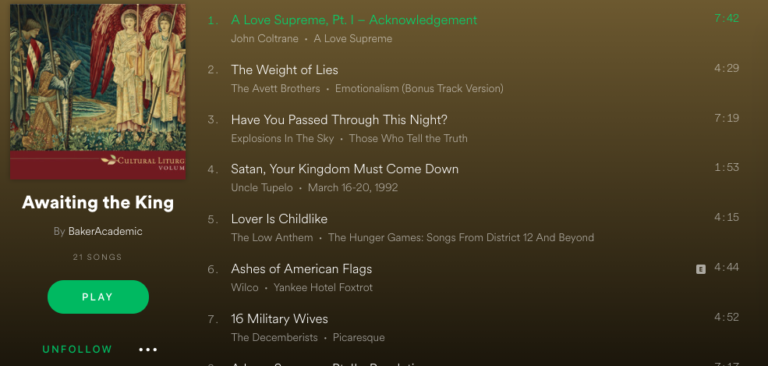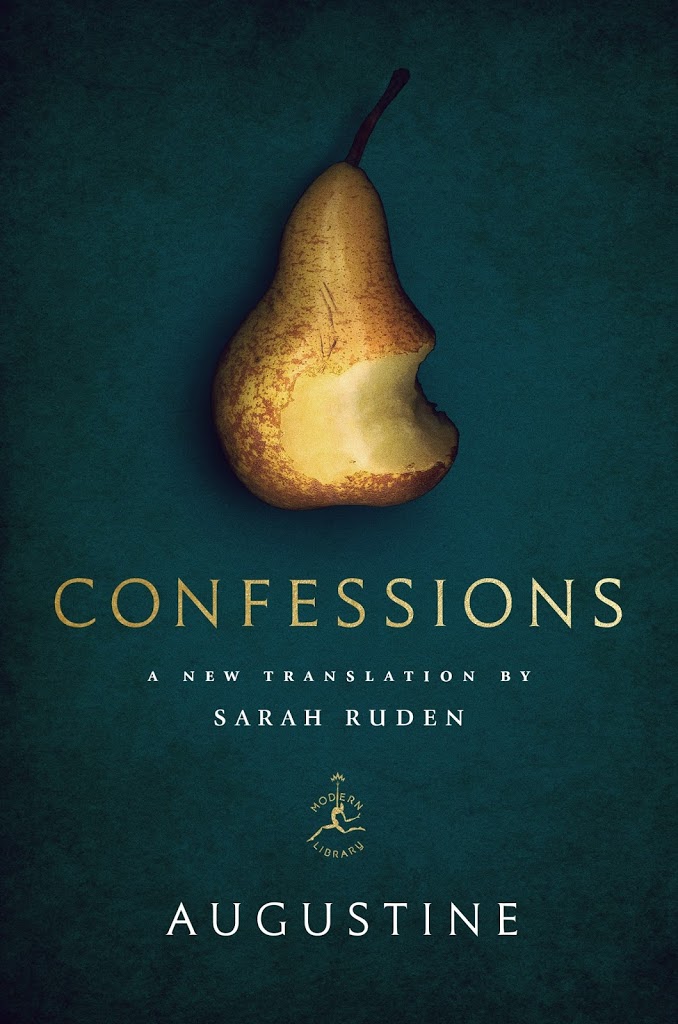Advent vs. “Countdown to Christmas”
I was jarred yesterday upon entering the sanctuary: the banners and colors for advent were black. A stark black cloth was draped across the pipes of the organ, and four narrow black banners stretched vertically across the front of the sanctuary–the first marked with a flame at the base, indicating the first Sunday of Advent.
This dark simplicity was so jarring because it stood in such contrast to the festive colors that have lined the city streets, the labyrinths of the mall, and even the grocery store since before Thanksgiving. The reds and greens of a secularized “Christmas” are woven through public and private spaces, accented by glittering silvers and golds, and twinkling lights of all colors. Having gathered from this dazzling, festive space outside, the black banners of the sanctuary come as a shock.
Which, of course, is exactly the point. Having been more deeply formed by Hallmark and Target, even Christians have confused Advent with our culture’s “countdown to Christmas.” Most specifically, we have forgotten that Advent is a penitential season akin to Lent. It is a season in which we are confronted with our need for a Savior, thus we relive Israel’s anquished hope and expectation. It is a season whose garments are the sackcloth and ashes of the prophets or the camel’s hair cloak of John the Baptist, not the jolly get-up of Santa Claus. Advent is a season marked by fasting in longing, living on the meagre diet of John’s locusts and honey–not the sumptuous extravagance of corporate “Christmas” banquets or the fabled indulgence of office “Christmas” parties.
We’ve been trained to want Christmas without waiting; rather than a beginning, Christmas day has been turned into a culmination, an end point. After December 25, it’s all over except for the soon-to-be-broken toys and the mounds of leftovers. Thus we busily feast before the day. Advent gets subsumed by the frantic “countdown to Christmas.” But the result is the exact opposite of Advent which is a season of penitential longing, formative denial, and hungry hoping.
This hungry hoping was captured, I thought, in a classic hymn we sang yesterday:
O come, O come, Emmanuel,
and ransom captive Israel,
that mourns in lonely exile here
until the Son of God appear.
O come, thou Wisdom from on high,
who orderest all things mightily;
to us the path of knowledge show,
and teach us in her ways to go.
O come, thou Rod of Jesse, free
thine own from Satan’s tyranny;
from depths of hell thy people save,
and give them victory over the grave.
O come, thou Dayspring, come and cheer
our spirits by thine advent here;
disperse the gloomy clouds of night,
and death’s dark shadows put to flight.
Advent is not yet Christmas–it is preparation for that twelve-day feast. The black of the Advent sanctuary weighs heavily on us, the same way that the darkness of the Lenten sanctuary–culminating in the darkness of Tenebrae–births in us an affective, intense desire for the inbreaking of Resurrection Sunday, for the light and white and lillies of Easter! So, too, the black of the Advent sanctuary can foster in us a new repetition of Israel’s hoping. How I’m looking forward to the transformation on Christmas day! Then, in the midst of festive light and dazzling color, we’ll sing the refrain with new fervor:
Rejoice! Rejoice!
Emmanuel has come to thee, O Israel.



